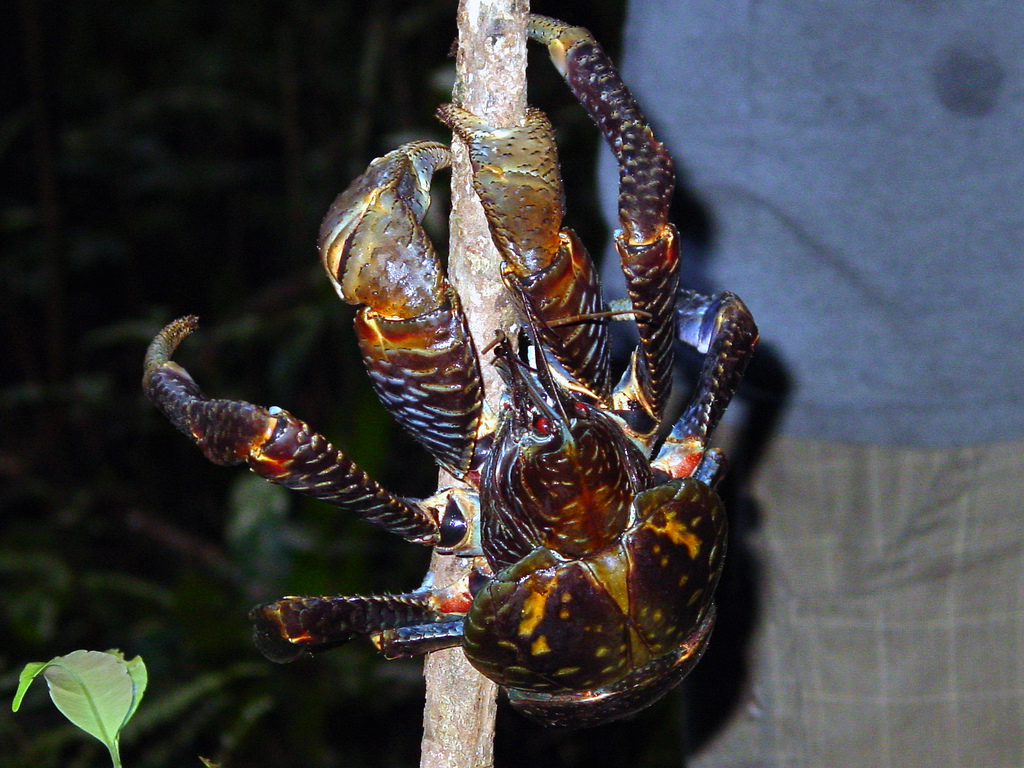Coconut crabs are some of the most fascinating creatures on our planet. These giant land crabs, native to islands in the Indian and Pacific Oceans, have captured the imagination of scientists and nature lovers alike. With their enormous size and unusual habits, coconut crabs seem almost like something out of a science fiction story. But these remarkable animals are very real, and they’re full of surprises. From their incredible strength to their unique lifecycle, coconut crabs are a testament to the wonders of nature. Here are 15 amazing facts about these extraordinary creatures that might just blow your mind.
They Have a Lion-Like Grip
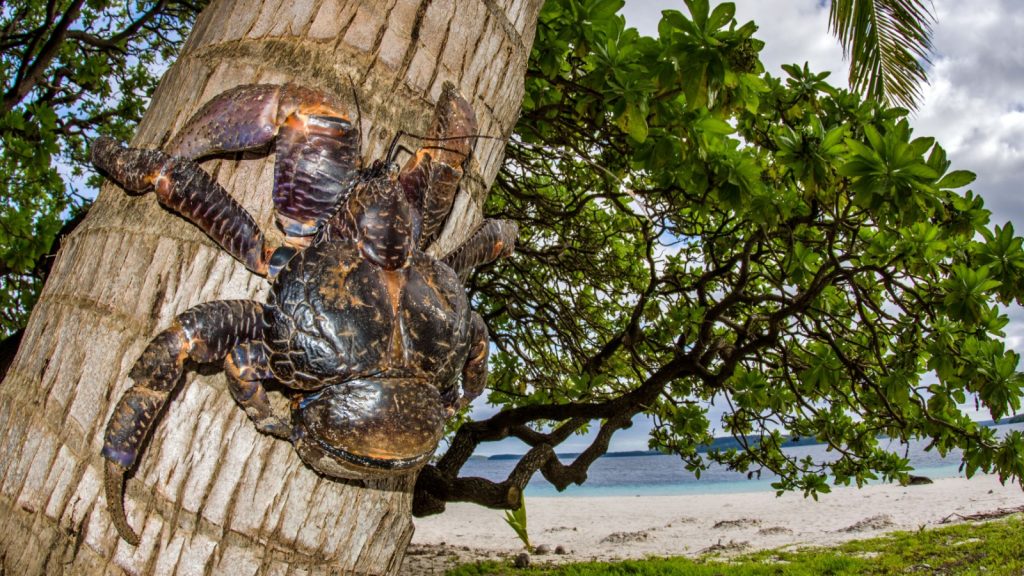
Coconut crabs have an incredibly powerful grip, rivaling that of a lion’s bite. Their claws can exert a force of up to 3,300 newtons, which is comparable to the bite force of adult lions. This tremendous strength allows them to crack open tough coconuts and defend themselves against potential threats. It’s just another reminder that these crabs are true powerhouses of the animal kingdom.
They’re the Largest Land-Dwelling Arthropod
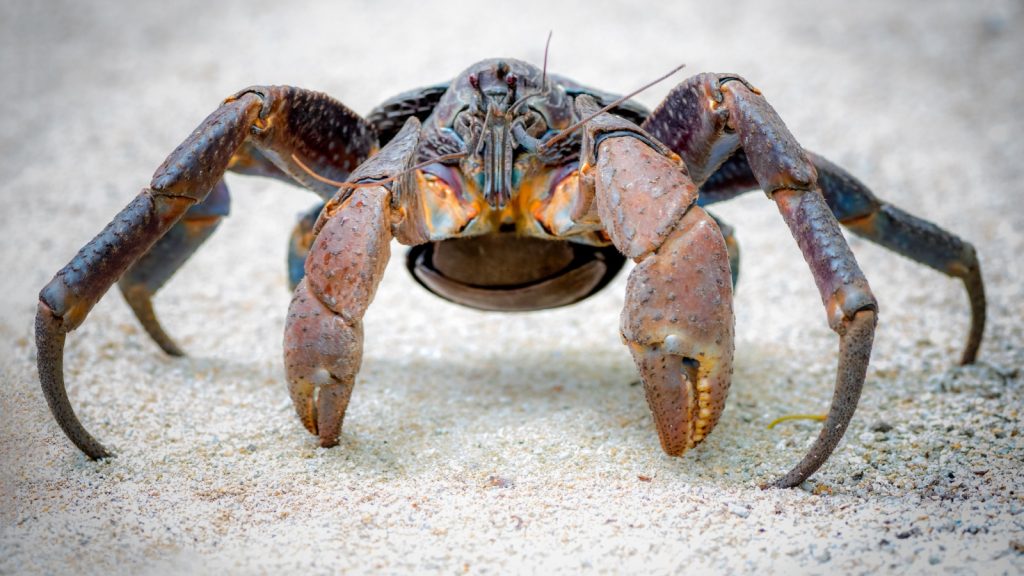
Coconut crabs are the biggest land-living arthropods in the world. They can grow up to 3 feet from leg to leg and weigh as much as 9 pounds. That’s about the size of a small dog! Their massive size makes them a sight to behold on the tropical islands they call home.
They’re Actually Hermit Crabs

Believe it or not, coconut crabs are a type of hermit crab. Unlike their smaller cousins, adult coconut crabs don’t need to carry shells on their backs for protection. They develop a tough exoskeleton that shields their soft abdomens. This allows them to grow much larger than other hermit crab species.
They Can’t Survive Underwater
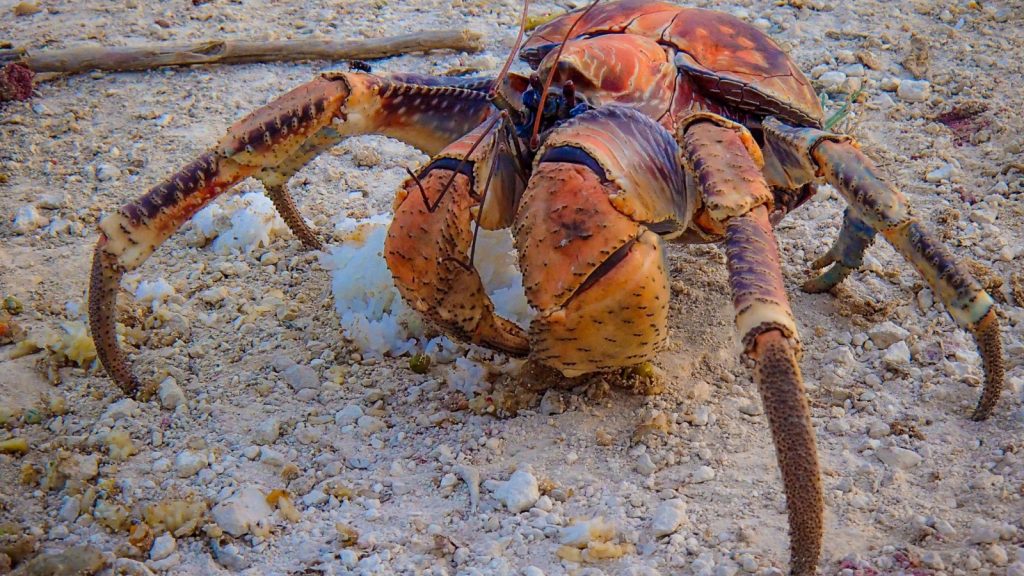
Despite being crabs, coconut crabs can’t live underwater. They have a special organ called a branchiostegal lung, which is a bit like gills that work on land. If a coconut crab stays underwater for too long, it will drown. They only enter the water to release their eggs.
They Have an Amazing Sense of Smell

Coconut crabs have an incredible sense of smell. They can detect odors from far away and use this ability to find food. Their antennae are packed with special receptors that pick up scents in the air. This keen sense of smell helps them survive in their island habitats.
They’re Excellent Climbers
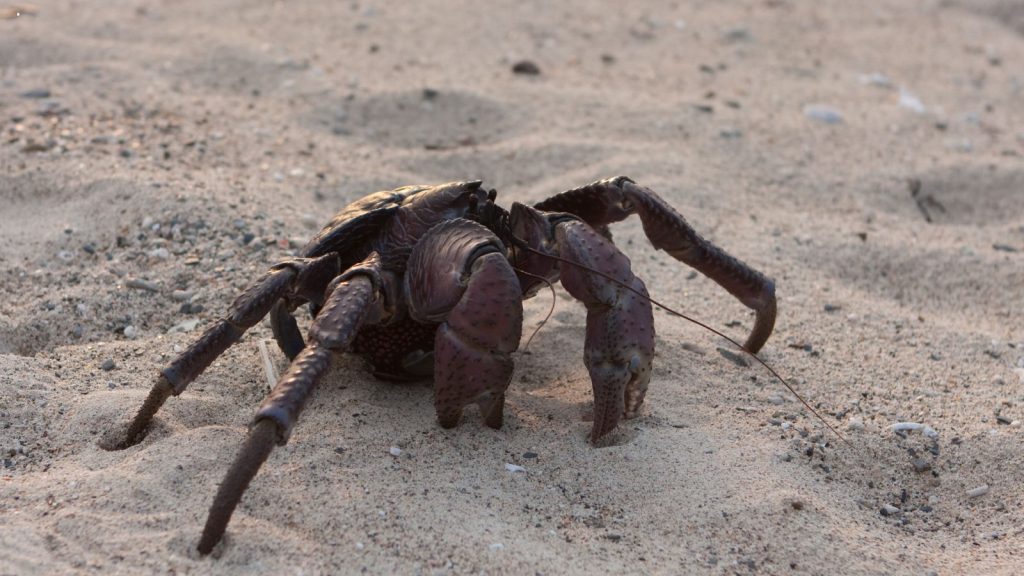
Don’t be fooled by their bulky appearance – coconut crabs are skilled climbers. They can scale trees and other vertical surfaces with ease. Their strong claws allow them to grip tightly as they climb. This ability helps them reach coconuts and other food sources high off the ground.
They Can Open Coconuts

As their name suggests, coconut crabs can indeed crack open coconuts. Their powerful claws can generate a force of up to 3,300 newtons – that’s stronger than most animals’ bite forces! They typically pry coconuts open at the weakest points, slowly working their way in over several days.
They Have a Varied Diet
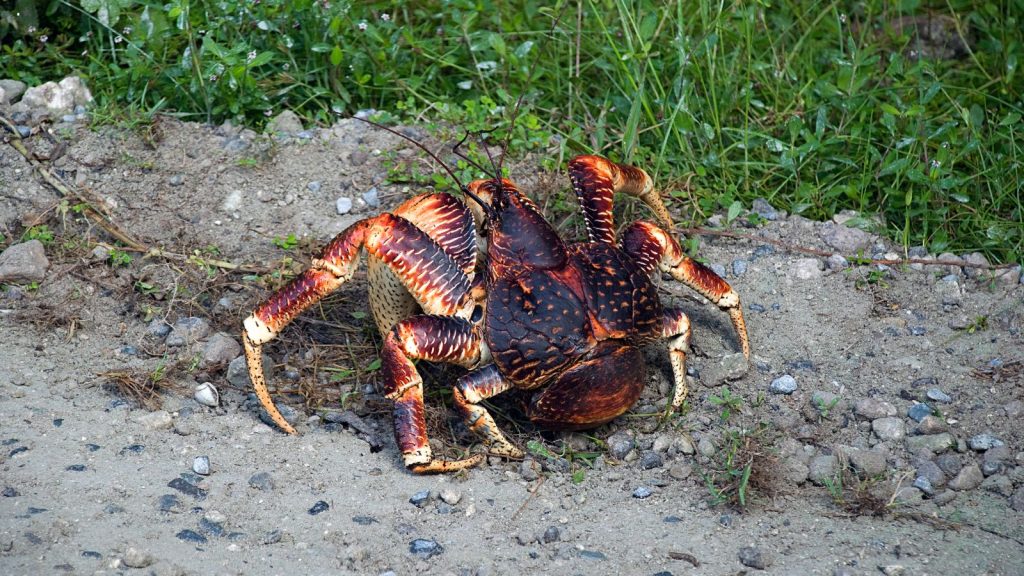
While coconuts are a favorite food, these crabs eat much more than that. They’re omnivores and will eat fruits, nuts, seeds, and even carrion. They’ve been known to hunt small animals and have a particular taste for other crabs. Their diverse diet helps them thrive in their island environments.
They Live Up to 60 Years
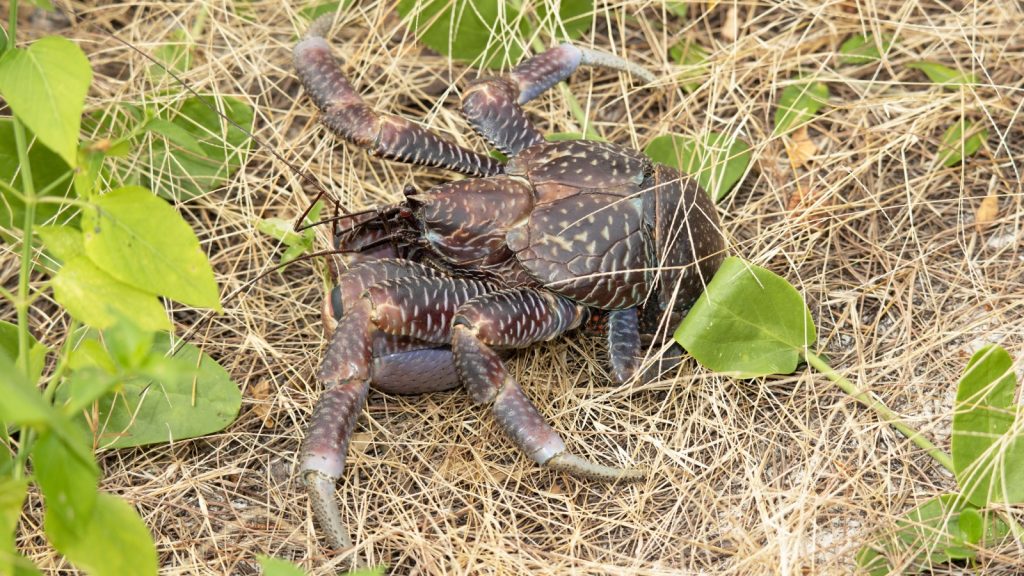
Coconut crabs have impressively long lifespans. In the wild, they can live up to 60 years. This long life allows them to grow to their enormous size. It also means they play a significant role in their ecosystems for many decades.
They Start Life in the Ocean
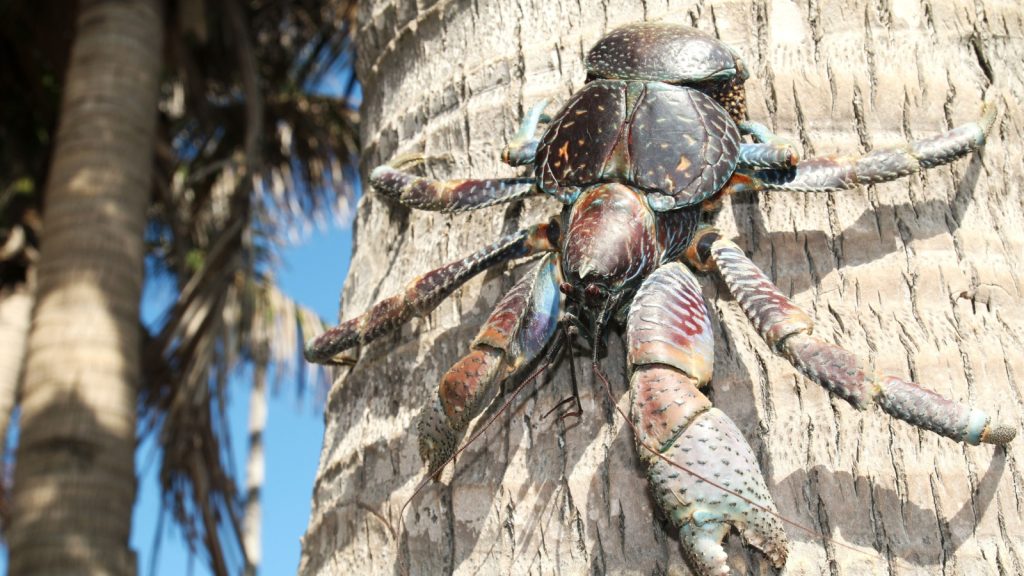
Despite being land-dwellers as adults, coconut crabs begin their lives in the sea. Female crabs release their eggs into the ocean, where they hatch into tiny larvae. These larvae float in the water for about a month before coming back to land. Once on shore, they find a small shell to protect themselves as they grow.
They’re Nicknamed “Robber Crabs”
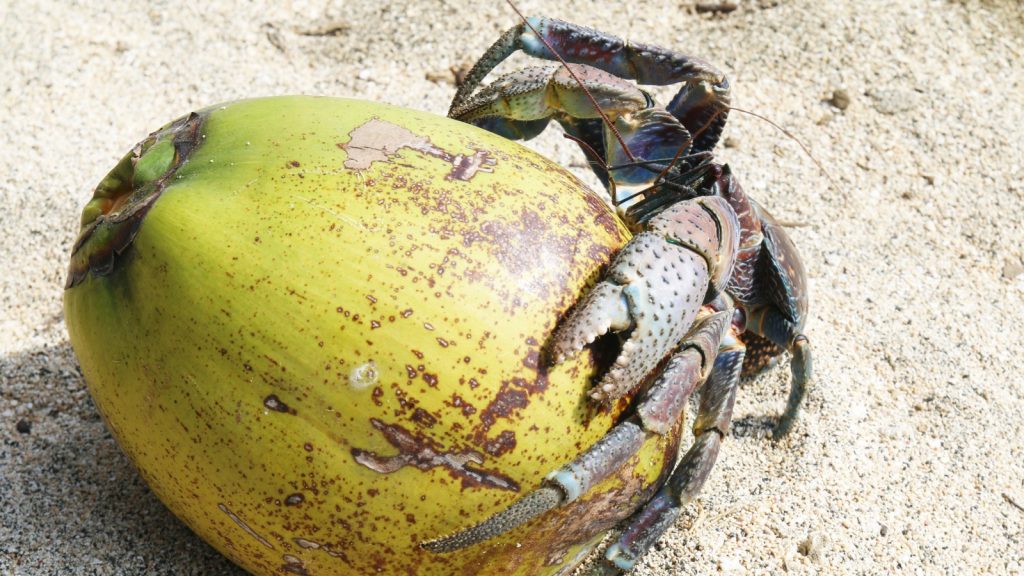
Coconut crabs have earned the nickname “robber crabs” due to their habit of taking things that catch their interest. They’ve been known to make off with shiny objects, tools, and even shoes! This behavior is likely driven by curiosity and their constant search for food.
They Can’t Swim
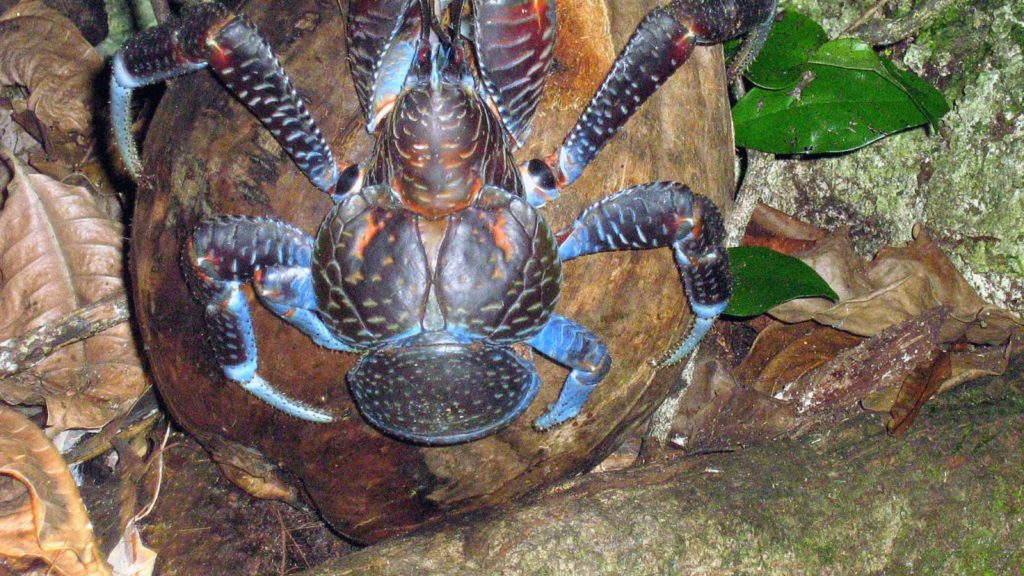
Adult coconut crabs can’t swim. If they fall into deep water, they’ll sink and drown. This inability to swim is why they’re found only on islands and coastal areas. It also explains why they’re not found on mainlands – they can’t cross large bodies of water.
They’re Vulnerable to Extinction
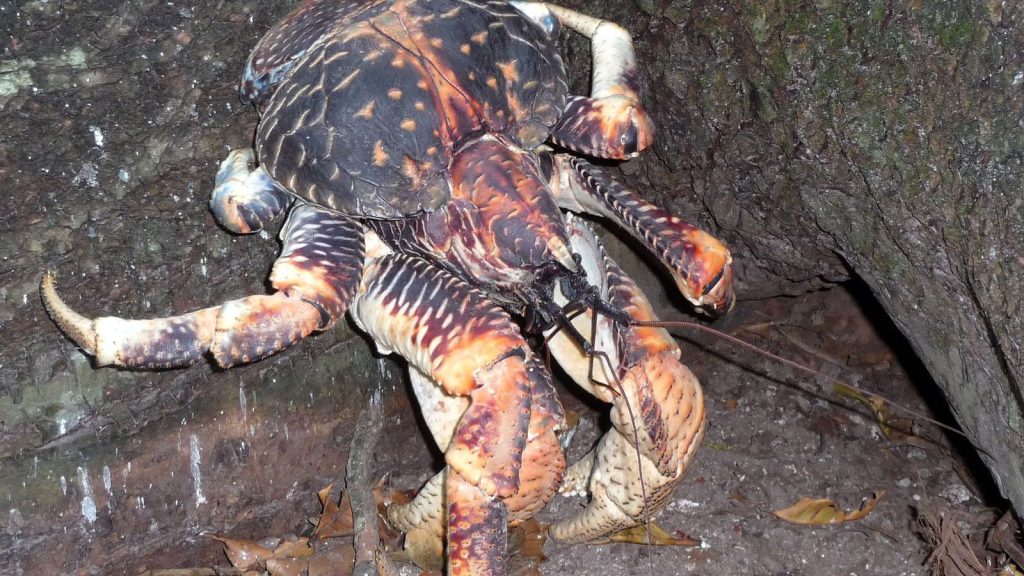
Despite their impressive size and long lifespan, coconut crabs are vulnerable to extinction. Human activities like habitat destruction and overhunting have reduced their numbers. Climate change also poses a threat to their coastal habitats. Conservation efforts are crucial to ensure these amazing creatures survive.
They Have Blue Blood
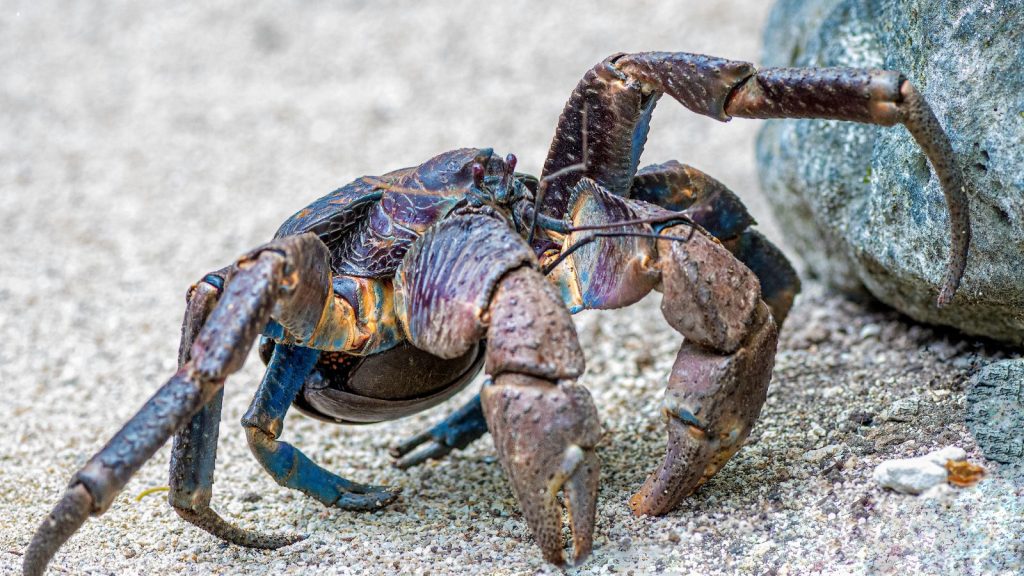
Like other arthropods, coconut crabs have blue blood. This is because their blood contains a copper-based molecule called hemocyanin, instead of the iron-based hemoglobin found in human blood. This blue blood helps them survive in environments with low oxygen levels.
They Molt to Grow
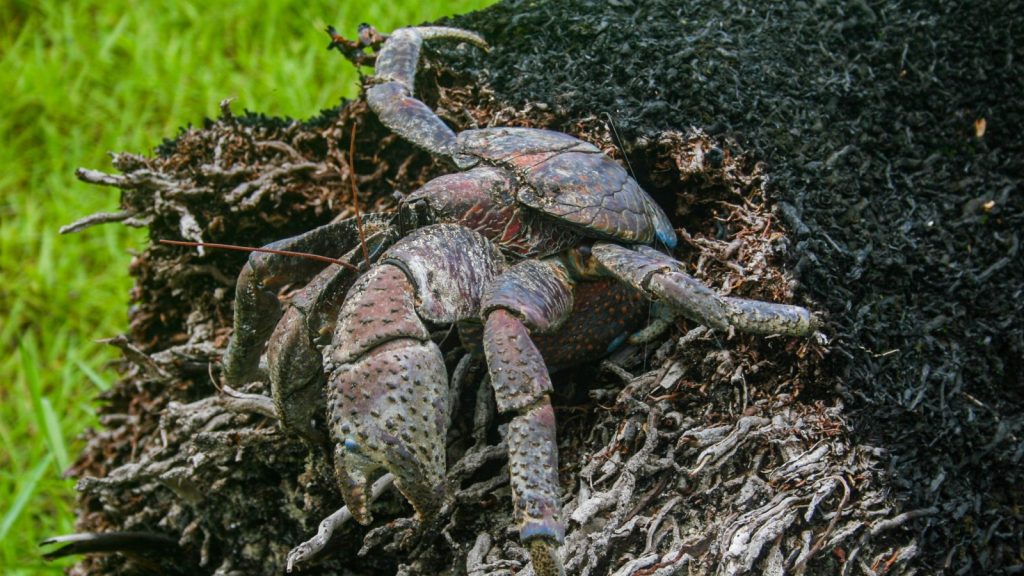
Like all crabs, coconut crabs grow by molting. They shed their hard exoskeleton and grow a new, larger one. This process can take up to a month, during which the crab is vulnerable to predators. They often hide during this time to protect themselves.
They’re Active at Night
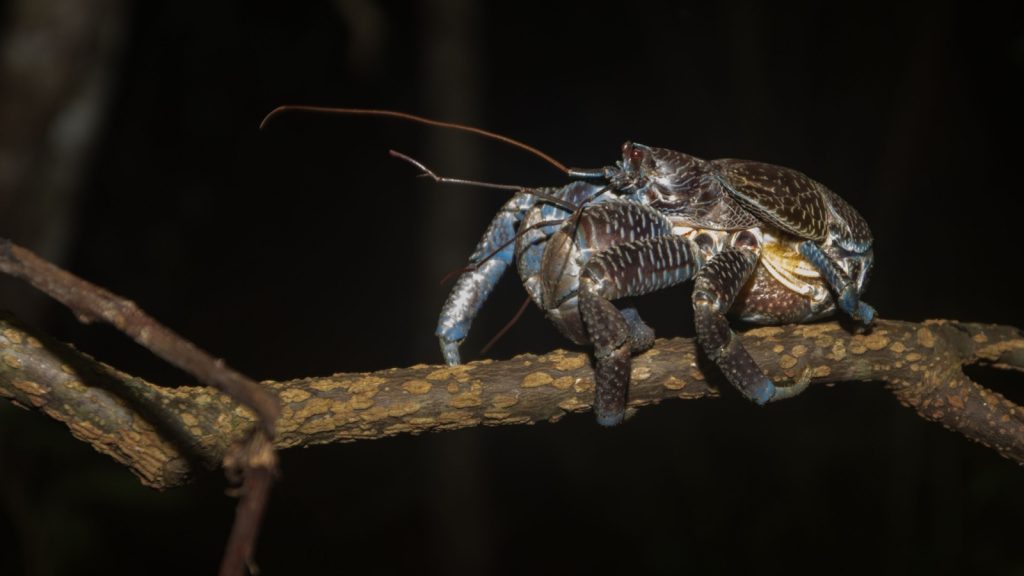
Coconut crabs are mostly nocturnal creatures. They’re most active at night when temperatures are cooler and humidity is higher. During the day, they often hide in burrows or crevices to avoid the heat and potential predators. Their nighttime habits make them mysterious and elusive to many observers.

